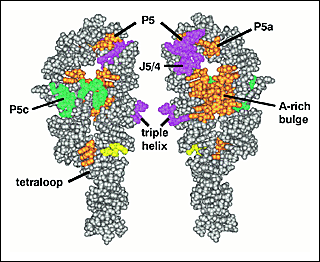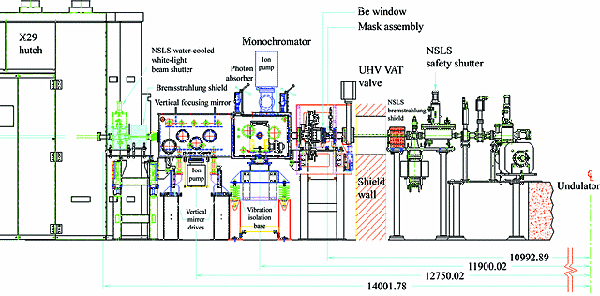NIH Funding Renewed for Case Center for Synchrotron Biosciences
September 3, 2009
Funding for a bioscience consortium that runs five beamlines at the National Synchrotron Light Source (NSLS) has been renewed through the National Institutes of Health (NIH). The Center for Synchrotron Biosciences (CSB), based at Case Western Reserve University, will receive a five-year, $4 million grant to continue the exploration of the structure and dynamics of proteins and nucleic acids.
Formed in 1995 with just 50 users, the CSB has since grown more than tenfold. The center now serves more than 550 NSLS users through the operation of beamlines X3A, X3B, X28C, U2B, and X29 – providing state‐of‐the art equipment, techniques, user support, and training for wide-ranging biological experiments. In addition, the CSB catalyzes further development and application of synchrotron radiation tools through a number of multidisciplinary collaborations and partnerships among its international community of scientists.

Front and back views of a space-filling model produced via hydroxyl radical footprinting of the Tetrahymena L-21 ribozyme in 1998 on CSB-run beamline X9A (now X3A).
“This renewal validates our long-term scientific strategic plan and emphasizes the importance of our facility for the NIH community,” said Mark Chance, Director of both the CSB and the Case Western Reserve's Center for Proteomics and Bioinformatics.
The CSB emphasizes three core synchrotron techniques: x-ray footprinting, which helps researchers study the structure, function, and dynamics of proteins and nucleic acids, including in vivo studies; x-ray spectroscopy, which provides investigators with an understanding of the role of metal atoms in proteins; and macromolecular crystallography – conducted in part at X29, where about one new protein structure is solved every two days, making it one of the most productive crystallography beamlines in the world.
Through 2014, the center is expected to support more than 175 projects across these three core techniques.
The NIH grant will fund the installation of an upgraded detector for x-ray absorption spectroscopy at beamline X3B, enhance the footprinting program by incorporating a focusing mirror into the beamline setup at X28C, and will allow for continued operational support at other CSB facilities.
Since the center’s creation, CSB-run beamlines have produced a wide variety of groundbreaking science. Examples include: solving the structure of a protein involved in the functioning of hepatitis C; showing how the intricate process of ribosome assembly happens on a very quick time scale; and gaining a better understanding of iron-based green catalysts that could be used to clean up pollutants.

Schematic drawing of the front-end and optical system at NSLS beamline X29, operated by the Center for Synchrotron Biosciences on one of the most productive crystallography beamlines in the world.
2009-1405 | INT/EXT | Newsroom









